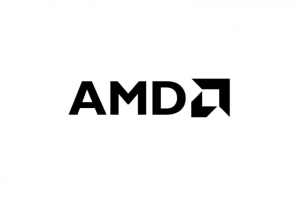I posted a weekly chart for Gilead Sciences (GILD) in the Idea Chamber a couple of days ago. I mentioned that it appeared to be forming a complex Double Zig-Zag wave pattern. I say complex because it is one of the tougher patterns to identify in a real-time situation. However, the Double Zig-Zag wave pattern for Gilead Sciences (GILD) is almost complete, making the identification process a little easier.
Gilead Sciences (GILD)
Let's start with the 5 year weekly chart that I posted in the Idea Chamber; this chart reflects a completed weekly candlestick for this week. This chart has a Fibonacci Extension Tool placed on it to measure the downside risk. The downside risk area I see as most prevalent is the 100% Target Line. I also included a couple of horizontal trendlines that resulted from earlier pullbacks. These earlier pullbacks help to identify current support and resistance areas.
GILD developed a Doji candlestick pattern this week on above average buying volume. It's share price appears poised to run-up into its dividend payment next week after forming the Doji. Is that Doji the reversal though for its downtrend? I don't think so.
The long red candlestick that pushed through the 50% Target Line from the Fibonacci Extension Tool did so on extremely heavy selling volume. It is the tallest selling volume spike in 2016. Also, I do not see a capitulating volume spike for GILD indicating that its downtrend is over. The 100% Target Line area would most likely be a target for its next earnings call from a timing perspective.
GILD - Downtrend Channel Test
I put Gilead Sciences (GILD) through the downtrend channel test. To perform the downtrend channel test, select a trading channel from your trading platform's software options. A Trading Channel has 3 anchor points. Place anchor point #1 at the top of the downtrend. Anchor point #2 gets placed on the low of the downtrend. And last, anchor point #3 gets placed at the widest point on the right side of the downtrend. Here is what it looks like for GILD.
Once the share price stops its downtrend and starts to rebound, anchor points #2 and #3 may need to be adjusted if it made a new low. A successful rebound in a channel test would include pushing through the top trendline in the channel, which I marked above. If the share price pushes through that overhead trendline on buying volume that is above average, that is confirmation that the downtrend is over and a new uptrend has indeed begun. Other forms of confirmation should most likely be observed as well, items like reversal candlesticks, a Golden Cross getting ready to develop, support at Retracement Line targets, etc.
GILD - Elliott & Fibonacci
Now let's break down Gilead Sciences (GILD) from an Elliott wave and a Fibonacci perspective. I will first identify the Elliott Wave Pattern and then work on the placement of the Fibonacci Retracement Tool.
Elliott Wave - 8 Wave Cycle Almost Complete
GILD's Bullish Impulse wave pattern (waves 1-5 to the upside) contain an extended wave pattern. While sometimes a wave extension can occur in either wave 1 or 5, the most common is an Extended Wave 3, as illustrated on GILD's 6 year weekly chart.

Illustration of a Bullish Impulse Wave Pattern that Contains an Extended Wave 3 - Gilead Sciences (GILD)
When there is a wave 3 extension such as GILD's, the most common pullback is to the area of wave 4 within the wave 3 extension. This area is the $63 area.
Fibonacci Retracement Tool
The placement areas for the anchor points from the Fibonacci Retracement Tool are the beginning of wave 1 and the end of wave 5, as illustrated on the same 6 year weekly candlestick chart.
The bottom of wave 4 in the extended wave 3 (the $63 area) conveniently is right between the 50% and the 61.8% Retracement Lines. The $61.8% Retracement Line is a great place to scale into position usually.
Gilead Sciences (GILD) - Summary
After a long, drawn-out correction from a Double Zig-Zag wave pattern, there are not many sellers left in the stock. Time has taken its toll on most investors. The constant downwards motion of the wave pattern causes most investors to sell, usually at a loss.
But after the completion of GILD's Double Zig-Zag wave pattern, it will have also completed an 8 wave cycle from an Elliott wave perspective. After the development of a complete 8 wave cycle, the most likely scenario is to start on the development of another 8 wave cycle. As long as fundamentally things have not changed, this is the expected next move for the share price.
In the meantime, GILD investors and want-to-be investors need to focus on the downtrend at hand. Shorter-term investors will want to watch for a reversal sign such as another bullish reversal candlestick around a support area. If you are risk averse and very protective of capital, wait for a confirmation from the downtrend channel test.
However, there is enough technical evidence to begin scaling into shares in the $57 - $63 range. These prices could be the best you will see for GILD in a while, at least until it re-tests that range once again before breaking out for good. But for longer-term investors, picking up shares at $60 or lower will yield more than a 3% dividend, effectively getting paid while at the bottom of a new potential uptrend. Not a bad deal.








1 Comment
Leave your reply.